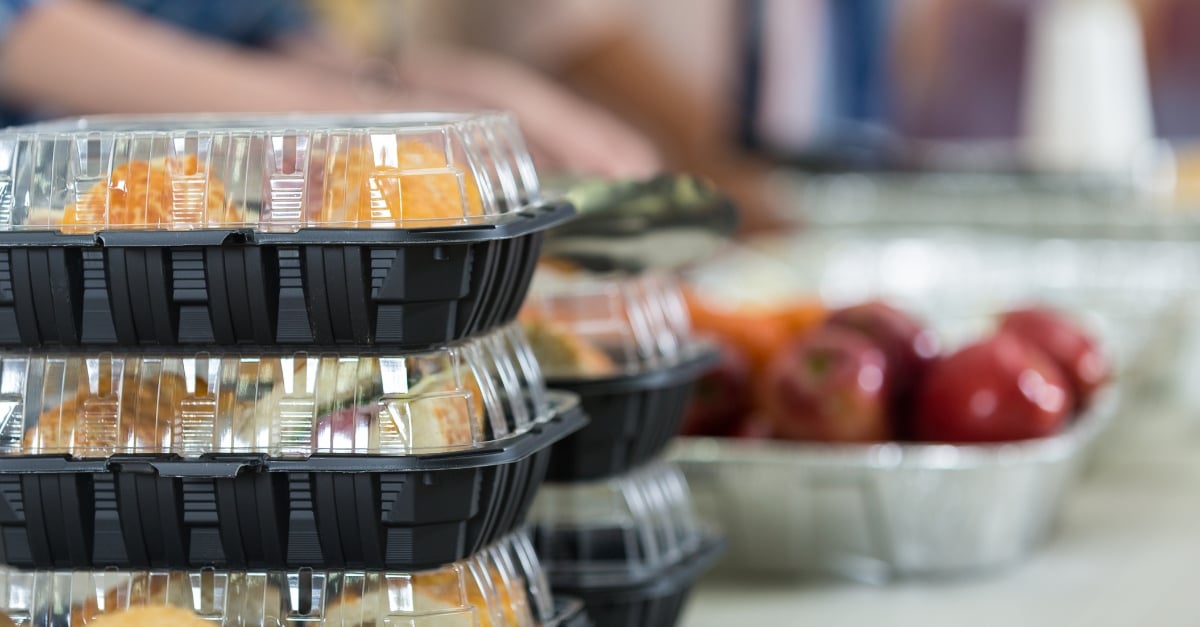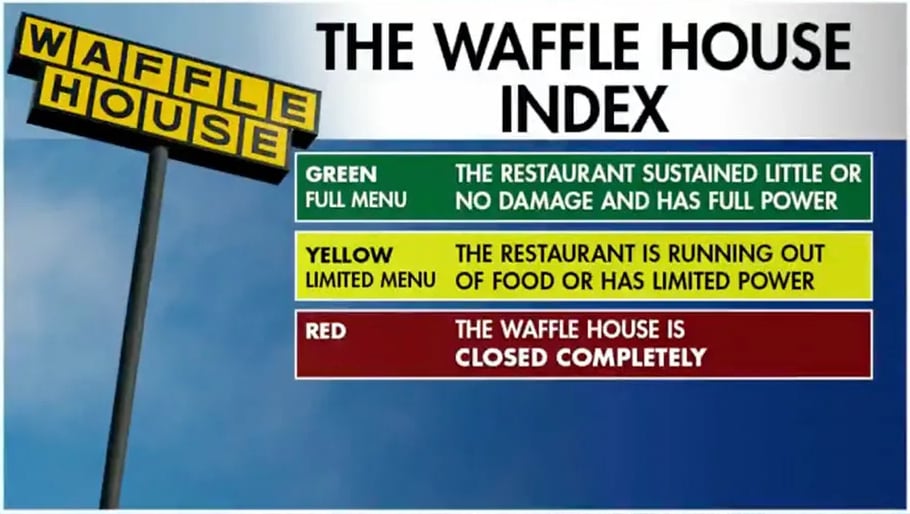Twelve Golden Rules From The Kitchen For Effective Leadership: ‘Mise En Place’
We’ve often been taught that “faster is better” when hustling to get a job done, but during my time working in the catering business, I learned...
4 min read
Dani Esterline Aug 9, 2023

The Waffle House Index was coined by Craig Fugate, former administrator of FEMA, to unofficially indicate a storm’s impact and the likely scale of assistance required, depending on whether the beloved restaurant chain is closed. Not only is the restaurant famous for hot plates of waffles and bacon, but it’s also open 24 hours a day, 365 days a year.
The index has three simple levels, based on the restaurant’s operations:

One thing is universally true during times of disaster and otherwise, people need food (even if it’s not chocolate-chip waffles). Amid disasters, agencies that support the emergency response are tasked with organizing and delivering food to thousands of hungry people, all while accounting for every meal to acquire FEMA reimbursements.
The process is no easy feat and requires strategy, steps, and planning. We’ve pulled together some examples of how agencies are applying technology to even further adapt their already impactful strategies for meal delivery, impacting:
Let’s begin with how emergency responders are using digital solutions to achieve complete accountability:
We know that providing meals for large groups during a disaster has a lot more moving parts than most realize and that there are many components to consider, with many grouped into meal registration, access, and tracking. Agencies are beginning to embrace technology to simplify these areas and increase disaster resilience accountability.
1. Meal registration — During times of crisis, those supporting the emergency response must register to receive provided meals. Historically, this process is paper-based, but this manual method brings the risk of human error and requires lengthy manual compilation for a comprehensive view of that day’s meal needs. Instead of relying on manual notations, organizations are turning to technology to simplify the meal registration process and quickly account for every mouth needing to be fed.
Platforms like verified credential tracking solutions aid in the process, by digitally checking in responders for shifts, during which they can indicate their need for a meal, or not, with just a couple of clicks. This makes for a more efficient and less error-prone way to account for meal registration.
2. Meal site access — Another critical component of disaster site meals is simply access to meal centers. Individuals are required to show proper credentials to access certain areas on emergency sites. Digital badging helps streamline access, making for quick, scannable entry to vital meal centers.
3. Meal tracking — The most important part of meal delivery is ensuring people are fed, but another piece of the puzzle is acquiring reimbursements for the costly process. When correctly accounted for, FEMA reimburses agencies for the cost of meals to help alleviate the massive financial burden following a disaster.
With a digital solution, individuals will digitally scan in for their meal to confirm eligibility, as indicated by their meal status selected during registration to receive their meal, be it breakfast, lunch, dinner, or an overnight snack. Agencies can then pull complete reports on meals provided, skipping lengthy administrative processing times to simplify FEMA reimbursement requests.
By using digital solutions for meal tracking from end to end, agencies can:
This helps during massive operations, as evidenced by Merit’s digital solution, utilized during the Hurricane Ian emergency response, which tracked a staggering:
Beyond the numbers, technology helps make an immense difference by helping to make informed decisions and operation efficiency.
We’ve gathered by now how technology can maximize accountability during disasters, but it can also assist with meal delivery logistics on-site.
4. Calculating accurate food amounts
With purpose-built solutions, agencies can track meal needs in real-time, ensuring enough food is available while also reducing expensive waste. Can you imagine a responder’s disappointment when stopping to refuel themselves and there not being any food left for them to eat? Or, instead of ordering 500 meals, perhaps only 300 are needed because other responders shared their intention to use their “per diem'' meal allowance to order their food when they registered. Often responders witness food scarcity in impacted areas, so food waste is troubling, and solutions that help lessen waste and make informed decisions for ordering meals help to also protect morale.
5. Staggering meal times
Another opportunity to improve meal delivery to consider is meal staggering. Consider how it’s common at events, such as weddings, for the catering team to call up people by rows or tables to come to get their food. By staggering groups coming to collect their food, events lessen long lines and heavy-wait times. The same can be true in emergency situations. Let’s go back to the earlier example, where an agency learns they need 300 meals that day, they can then assign staggered meal times to say, 50 people at a time, to get people fed and back to their critical work, faster.
6. Planning for the future
If an emergency manager were to give you one piece of advice, it’s likely they may say “Plan on blue-sky days.” Essentially meaning, plan before the bad stuff happens, so your agency can be better prepared and recover faster. States that are prone to disasters are constantly making and improving on comprehensive plans and strategies for the next time a disaster strikes.
Technology solutions help future-proof emergency management. As we discussed back in the “accountability” section, a shining example of disaster resilience assisted by technology was during Hurricane Ian. The interesting part of it all is that other emergency responders can replicate these processes for increased accountability and operational efficiency in meal delivery. Let’s say that a disaster strikes in Texas similar to the size of Hurricane Ian — the area affected can plan to come ready with at least 300 Meals Ready to Eat (MREs). Emergency responders can repeat the process that those did in Ian, and use technology along the way to make real-time decisions, streamline processes for meal registration, access, and tracking, reduce food waste, and receive faster FEMA reimbursements.
Navigating meal management in emergency situations is by no means a simple process, and meticulous planning has to happen to ensure that emergency responders, volunteers, and survivors are fed. The silver lining is that there are technology solutions that help make this cumbersome process easier so that staff can get back to other critical roles in disaster recovery.
Hurricane Ian is just one example of best-practice meal management aided by technology, but any agency can partner with technology to help:
Ready to discover how Merit can help improve your meal delivery for the next time a crisis happens?
We’ve often been taught that “faster is better” when hustling to get a job done, but during my time working in the catering business, I learned...
Your people are your most valuable asset and your biggest competitive advantage. Invest in them wisely, and they’ll take your company places you...
Big workforce initiatives thrive on strong collaboration between ecosystem partners; however, navigating those projects may sometimes be challenging....